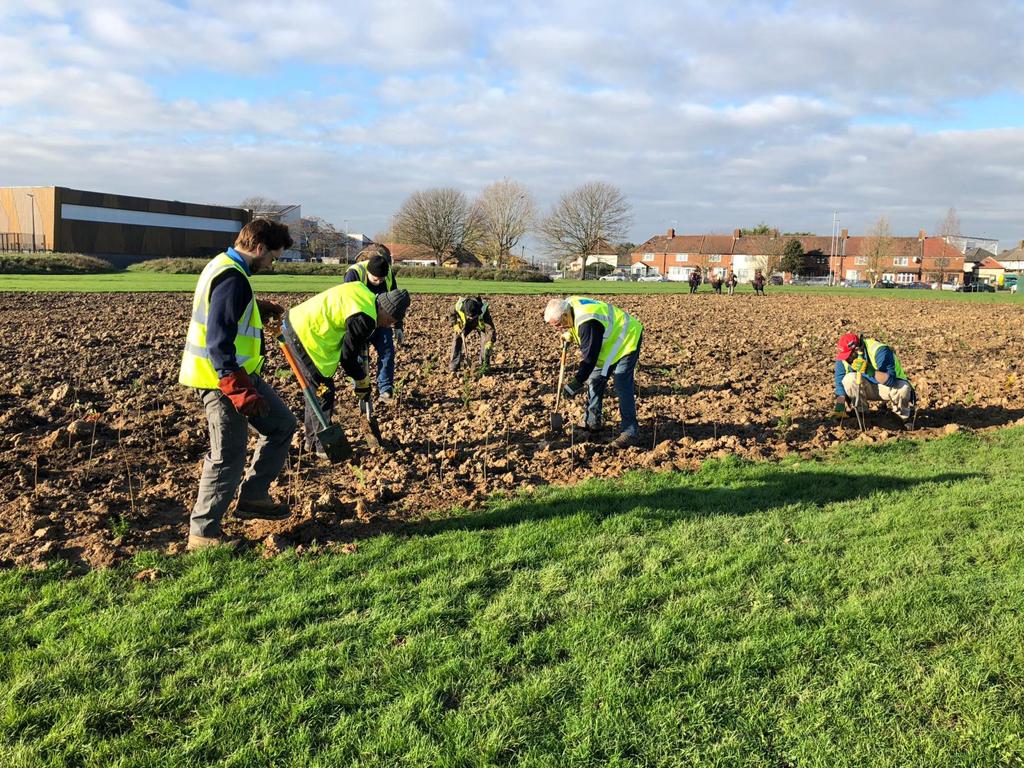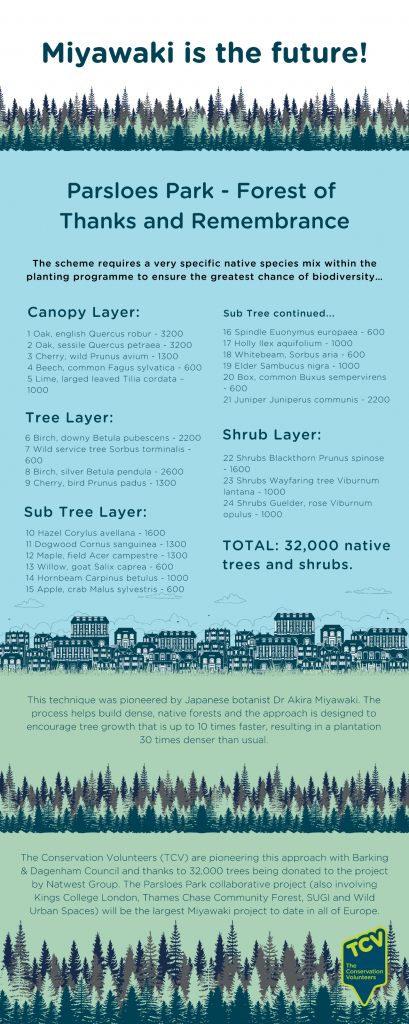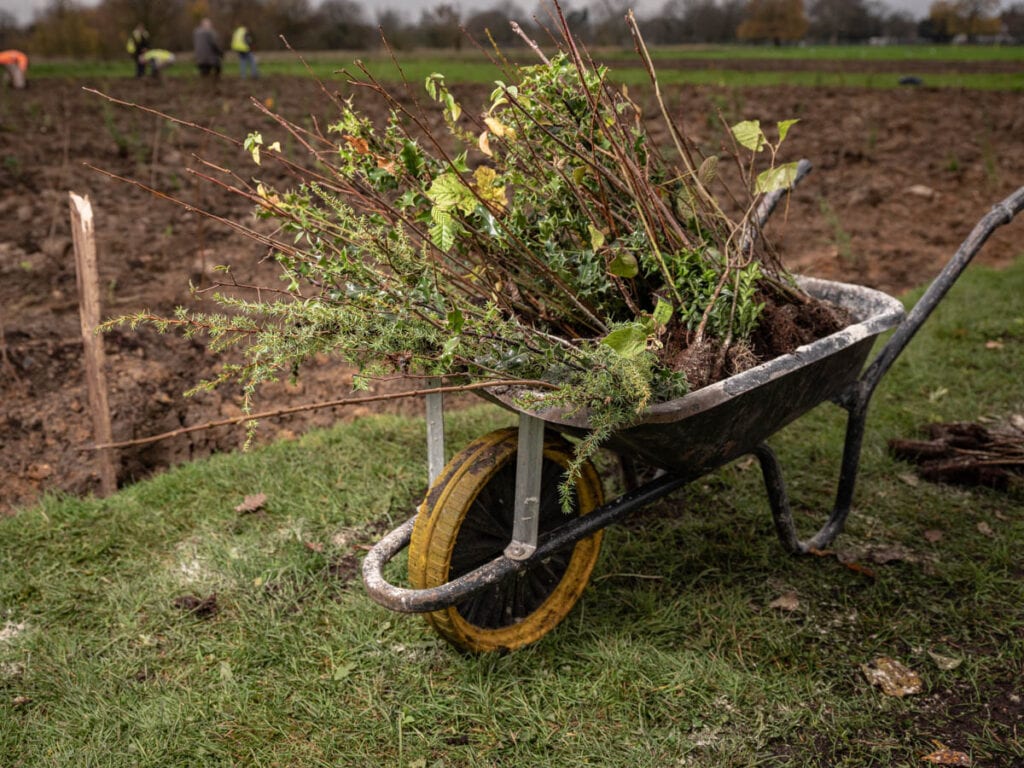Mini Urban Forests – for people and green spaces
Trees – we all know they are good for the environment, helping to combat global warming and creating new opportunities for establishing habitats and increasing biodiversity.
We also know they add to the beauty of green spaces, enhancing the mental and physical health and wellbeing benefits that being in nature provides.
So what if you could significantly increase the volume of trees in one area and simultaneously increase all of these benefits? Especially in urban areas where opportunities to ‘green they grey’ are limited.

Maintenance-free Native Forests
Using the Miyawaki method, pioneered by Japanese botanist Dr Akira Miyawaki, circa 200 trees can be planted in an area you might now traditionally plant circa 50 trees.
The process helps build dense, native forests and the approach is designed to encourage tree growth that is up to 10 times faster, resulting in a tiny forest 30 times denser than usual.
The area becomes maintenance-free after the first three years, providing a chemical and manmade fertiliser-free forest, teeming with wildlife, which nurtures itself once established.
It is believed that its effectiveness is down to using native trees whilst replicating natural forest regeneration processes. The volume and variety of trees used in the Forest of Thanks, created by The Conservation Volunteers and partners can be seen here:

After four years, a mini urban forest using the Miyawaki method can:
- Absorb 24,000 kg of carbon: up to 30 times better absorption compared to other tree-planting schemes
- Create a huge increase in biodiversity
- Process 1,500,000 litres of rain
- Improve air quality by reducing polluting floating particulates by up to 10%
- Be up to 30 times better noise reduction compared to other tree-planting schemes
By using this method, we have more trees, reduce the effects of climate change, slow the decline in biodiversity, and combat species loss. Sounds good?
And there’s more… for people
People who live close to green spaces are more likely to have improved mental and physical health. Access to green spaces can decrease a person’s blood pressure and stress levels, leading to an overall increase of wellbeing in urban communities.
Plus, there is an opportunity to engage the local community in planting trees and the ongoing care and monitoring of them.

Using Citizen Science principles, anyone can become a scientist and collect data on the activity beneath their feet. For instance, they can collect measurements on tree diameter, canopy cover, soil chemistry, and conduct bird, insect and plant surveys.
For The Conservation Volunteers’ recent mini urban forest project in Parlsoes Park, this means we can assess if there is a difference in the speed of colonisation between the Miyawaki method where we have planted 32,000 trees in one hectare of land, versus a section of trees planted using the traditional method.

Engaging the community as Citizen Scientists not only develops their own learning and skills and connection to nature but also greatly increases scientist’s ability to collect data about a project and in turn, ensures the forests are protected.
Planting and monitoring projects also bring communities together, developing a shared interest in their local green space. These projects truly leave a legacy.
More trees, multiple benefits
The Conservation Volunteers is pioneering the Miyawaki approach to forest planting with Barking & Dagenham Council and thanks to 32,000 trees being donated to the project by Natwest Group. The Parsloes Park – Forest of Thanks and Remembrance (also involving Kings College London, Thames Chase Community Forest, SUGI and Wild Urban Spaces) aims to combine remembrance with an appreciation for all the hard work frontline workers have delivered and will be the largest Miyawaki project to date in all of Europe.
The Conservation Volunteers is a UK charity that connects people and green spaces, through activities such as tree planting, to tackle the climate and ecological emergency and provide lasting outcomes for people, communities and nature. We’re proud to be a part of this fantastic partnership which will employ both traditional and innovative new tree planting methods at Parsloes Park, a valuable local green space.
Darren York – Chief Executive, The Conservation Volunteers

